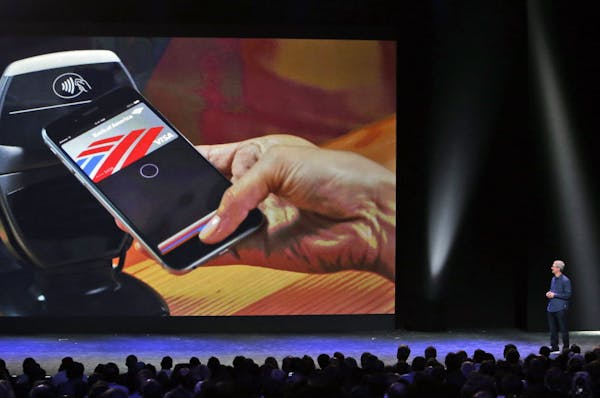Smartwatches sound so futuristic, so high-tech.
Dick Tracy had one. So did the Jetsons and James Bond. Even Penny from the "Inspector Gadget" cartoons had a computer-like watch that made video calls.
"We have this amazing dream and this cultural vision of what we expect watches to do," said Greg Swan, senior vice president of digital strategy for PR firm Weber Shandwick.
When Apple Watch landed — at least in demo form — this week, it joined a pile of smartwatches trying to live up to those dreams.
As accessories to smartphones, smartwatches can do all sorts of things, from displaying text messages to tracking fitness stats. Why look at your phone when you could get your Facebook updates on your wrist?
Still, smartwatches haven't caught on in a big way.
True, there's been a lot of buzz about the Motorola Moto 360. The traditional-looking watch that runs on Android Wear, Google's smartwatch operating system, sold out as soon as it launched this month. And other smartwatches have found popular support on crowdfunding platforms. Nearly 69,000 backers pledged more than $10 million on Kickstarter in 2012 to get the Pebble watch off the ground.
But here's a wet blanket statistic for those with a burning desire for the smartwatch era: Thirty percent of the Samsung Gear smartwatches purchased at Best Buy get returned, according to a Samsung corporate report leaked last year.
It's tough to be a first-generation smartwatch in a world where people are attached to smartphones that do lots of tricks. Why drop a couple hundred bucks for a watch that's basically an extension of a smartphone, but with a smaller screen? The Moto 360 starts at $249. The least expensive Apple Watch, which will be available in early 2015, will be $349.
Brooks Goldade, vice president of digital strategy for search engine marketing firm Nina Hale Inc., said he thinks Apple might be getting close to giving people a reason to strap on a smartwatch.
Apple has "probably made the most compelling argument yet, which is that this is about your health and living a better life," he said.
Apple Watch tracks your movement, the amount of time you stand, your exercise. It will nag you to meet your goals, and can take your pulse and collect other health data that might be useful for your doctor.
Then there's Apple Pay, the mobile payment system unveiled along with the watch and new iPhones. You can store your credit card info on the iPhone, then use the phone or smartwatch to make payments — no plastic necessary. That sounds a whole lot more convenient than digging the change out of the bottom of your purse while juggling a cup of coffee at the cash register.
Apple has also billed its watch as a new, more intimate form of communication in a time when technology can make people feel disconnected.
Want to give your Apple Watch-wearing sweetheart a love tap? Just tap your Apple Watch and he'll feel it on his wrist. (You also can send little doodles or a heartbeat, since the gadget is already checking your pulse.)
"We love to make technology more personal," Apple CEO Tim Cook said as he presented the watch.
Personal tricks aside, it's still unclear if people are ready to put on a watch. It seems just yesterday we were giving up watches in favor of the clocks on our smartphones.
Katie Humphrey • 612-673-4758

Meet the Oscar-winning cinematographer who has changed the way the movies look
An Algerian reporter says he was expelled from his country without explanation

A former deli maestro steps into Capt. von Trapp's shoes in Artistry's 'Sound of Music'

NPG vets Michael Bland and Sonny Thompson extend their brotherhood into a post-Prince duo

